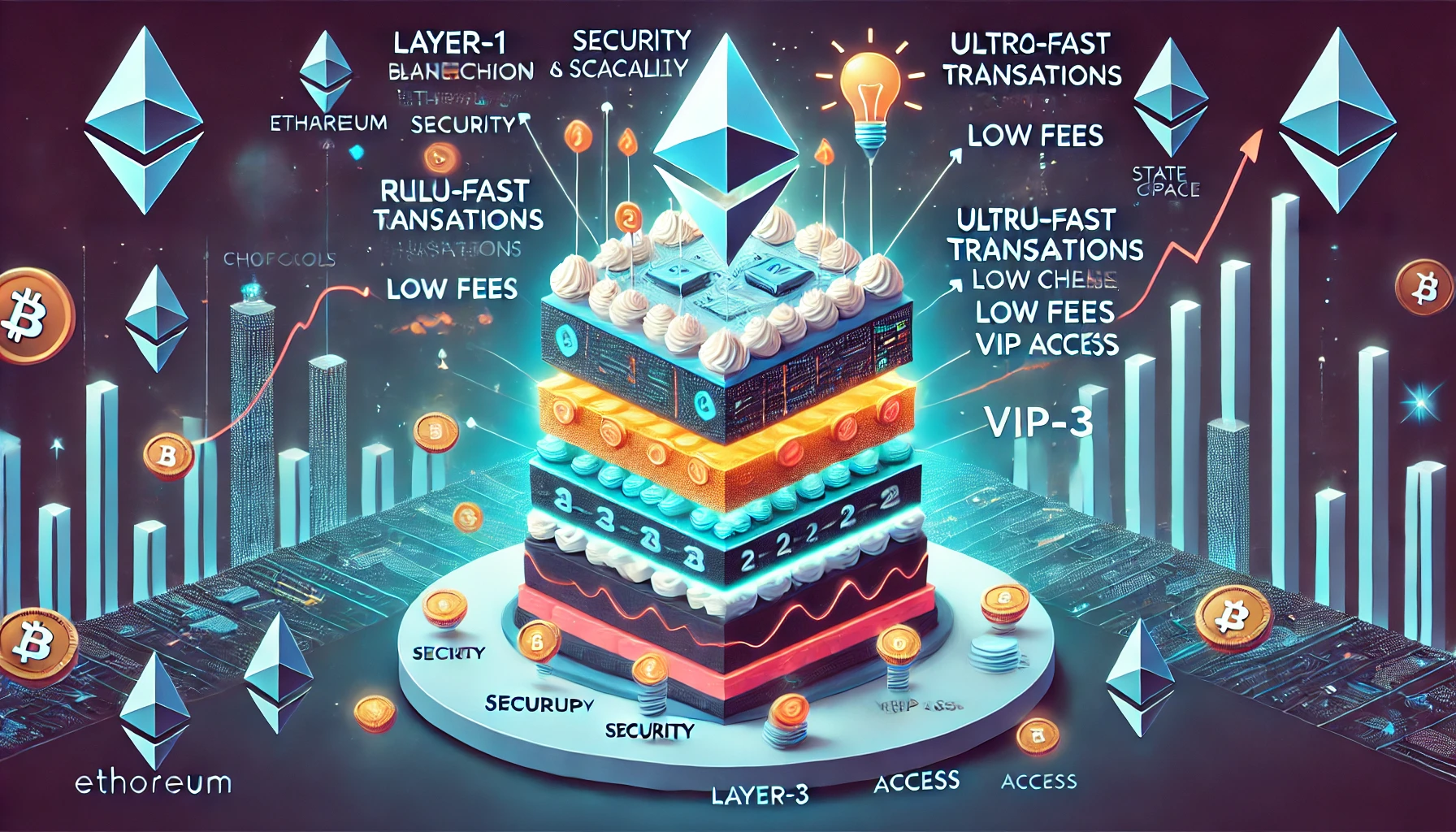How Layer-3 Blockchain Protocols are Supercharging DeFi Efficiency: Scalable Solutions Powering the Future of Finance

Introduction to the Layered Blockchain Cake
Blockchain is like an onion—no, wait, it's like a cake. Each layer adds functionality, but also a little bit of complexity. By now, you’ve probably heard of Layer-1 and Layer-2 blockchains, the foundational layers that most DeFi applications are built on. But what happens when these layers start getting crowded? Enter Layer-3 solutions—yes, you read that right. These protocols are emerging to turbocharge DeFi by solving scalability bottlenecks, reducing transaction costs, and making everything work faster than ever before. If you're thinking, 'Can it get more efficient than this?' the answer is a big yes.
The Layer Cake: How Layer-3 Builds on Layer-2
Before we dive into the magic of Layer-3, let’s quickly recap what Layer-2 does. Layer-2 solutions like rollups and state channels were introduced to ease the load on Layer-1 blockchains like Ethereum. They help reduce the congestion caused by all those DeFi transactions clogging up the network like rush-hour traffic. But as DeFi grows, even Layer-2 is starting to feel the strain. That's where Layer-3 swoops in to save the day.
What Exactly is Layer-3?
Layer-3 protocols are designed to work on top of Layer-2 to further improve scalability, security, and user experience. Think of it as a VIP fast lane at a concert where Layer-2 is already helping people skip the general admission line, and Layer-3 is like the special wristband that lets you waltz straight to the front row. These protocols offer specialized services such as better privacy, ultra-low transaction fees, and lightning-fast settlements, making DeFi not only scalable but downright enjoyable. Who doesn’t want their transactions to feel like they’re on a rollercoaster?
Layer-3 DeFi Projects You Should Know About
Several cutting-edge DeFi projects are jumping on the Layer-3 bandwagon, and they’re not messing around. Platforms like StarkNet, which builds on Layer-2 with ZK-Rollups, are pushing boundaries in terms of transaction speed and efficiency. Optimism and Arbitrum, already darlings in the Layer-2 space, are also experimenting with Layer-3 solutions to reduce costs even further. These protocols are making DeFi smoother than a cold brew on a hot day, all while keeping the network secure and decentralized.
Addressing Ethereum’s Congestion Problem
Ethereum, despite its legendary status in the blockchain world, has faced significant congestion challenges. During DeFi booms, gas fees skyrocket, and transaction times become glacial—hardly ideal for a financial revolution. Layer-3 solutions are stepping in to address this issue by offloading more of the computational work from Ethereum’s main chain. With Layer-3 in the picture, the idea is to make DeFi transactions as quick and cheap as buying your morning coffee—minus the eye-watering gas fees, of course.
The Future of Layer-3 in DeFi: Scaling Beyond Ethereum
While Ethereum is the obvious candidate for Layer-3 scalability solutions, other blockchain networks are also looking to benefit. Polkadot, Solana, and Avalanche are experimenting with similar multi-layer solutions, aiming to bring their own unique spin to DeFi scalability. Layer-3 isn’t just about solving Ethereum’s problems—it’s about bringing the next level of efficiency to the entire DeFi ecosystem. So, whether you’re a Polkadot enthusiast or a Solana fan, there’s plenty to get excited about.
Why Layer-3 Matters: The Real-World Impact
For all the technical jargon, you might be wondering, 'Why should I care about Layer-3?' The answer is simple: it makes DeFi more accessible to everyone. Lower transaction fees mean that everyday users can participate in DeFi without feeling like they’re spending half their crypto just on gas fees. Faster transaction times mean more efficient financial products. Layer-3 could be the key to bringing decentralized finance to the masses, unlocking a future where financial services are as easy to use as your favorite app.
Challenges to Overcome: It’s Not All Smooth Sailing
Of course, Layer-3 solutions aren’t without their challenges. There are still hurdles to overcome in terms of security, interoperability, and adoption. No one wants a repeat of the early days of Layer-2, where adoption was slow due to complicated UX and fragmented ecosystems. Developers are hard at work making sure Layer-3 protocols are user-friendly and secure, but as with any new technology, there’s a learning curve.
Conclusion: Is Layer-3 the Future of DeFi?
With all these advancements, it’s clear that Layer-3 has the potential to revolutionize DeFi scalability and efficiency. But the question remains: Will it live up to the hype? As more projects integrate Layer-3 solutions, we’ll see if this new layer truly delivers on its promises. So, are you ready for a faster, cheaper, and more scalable DeFi experience? Or will the blockchain world keep searching for the next big thing? Let us know what you think—after all, in the world of DeFi, there’s always something new just around the corner.



